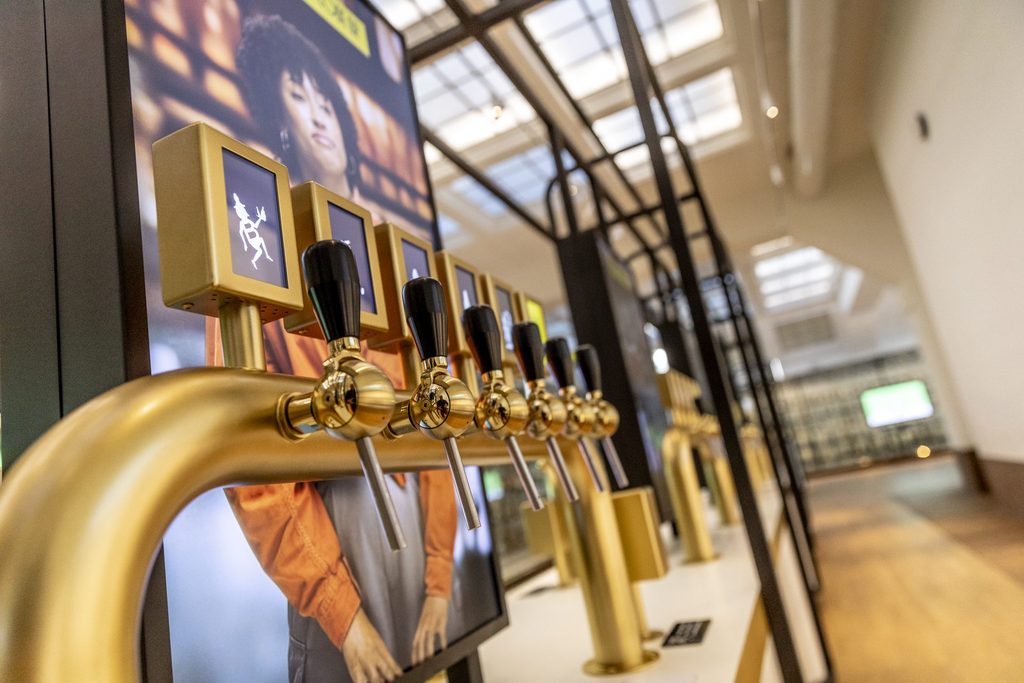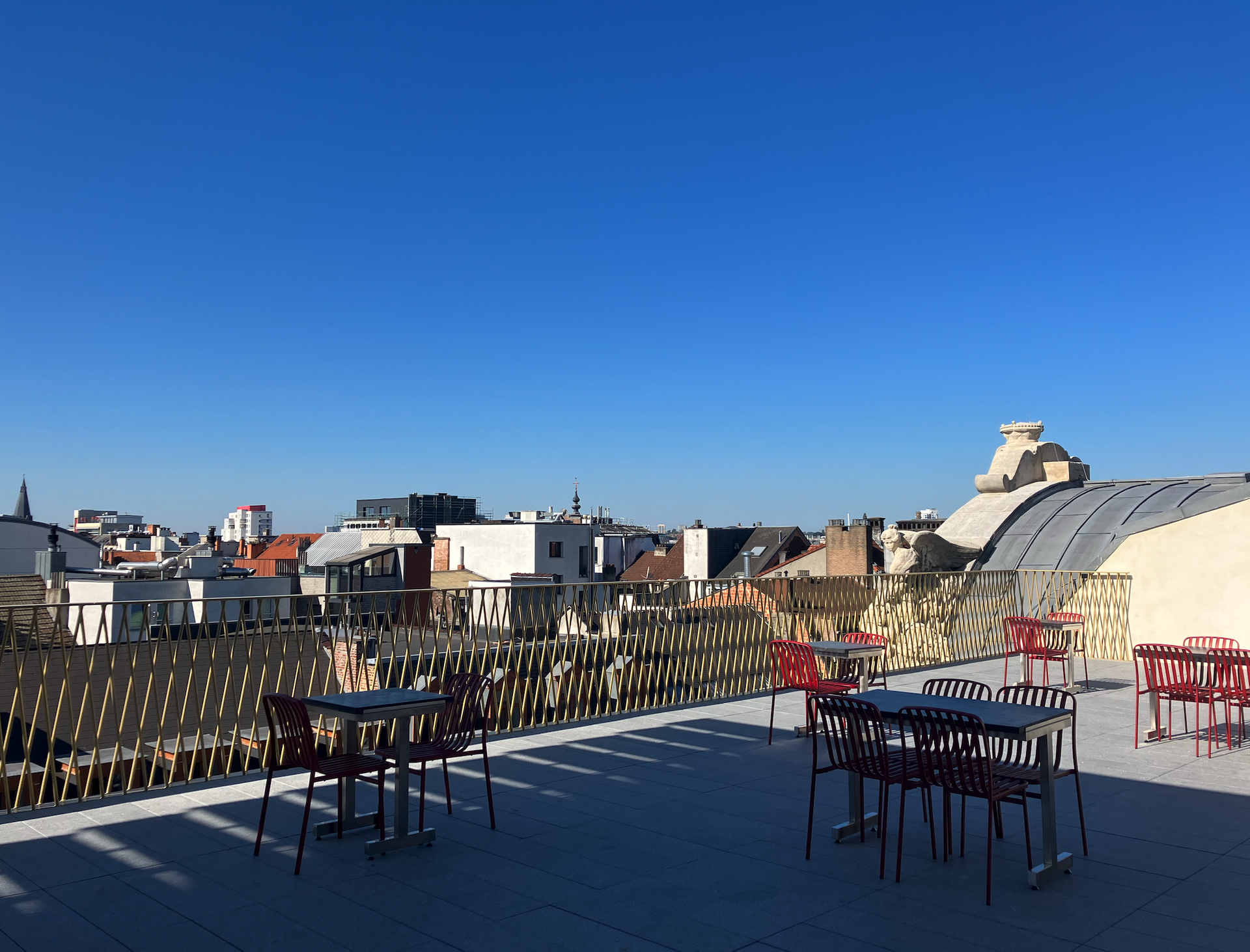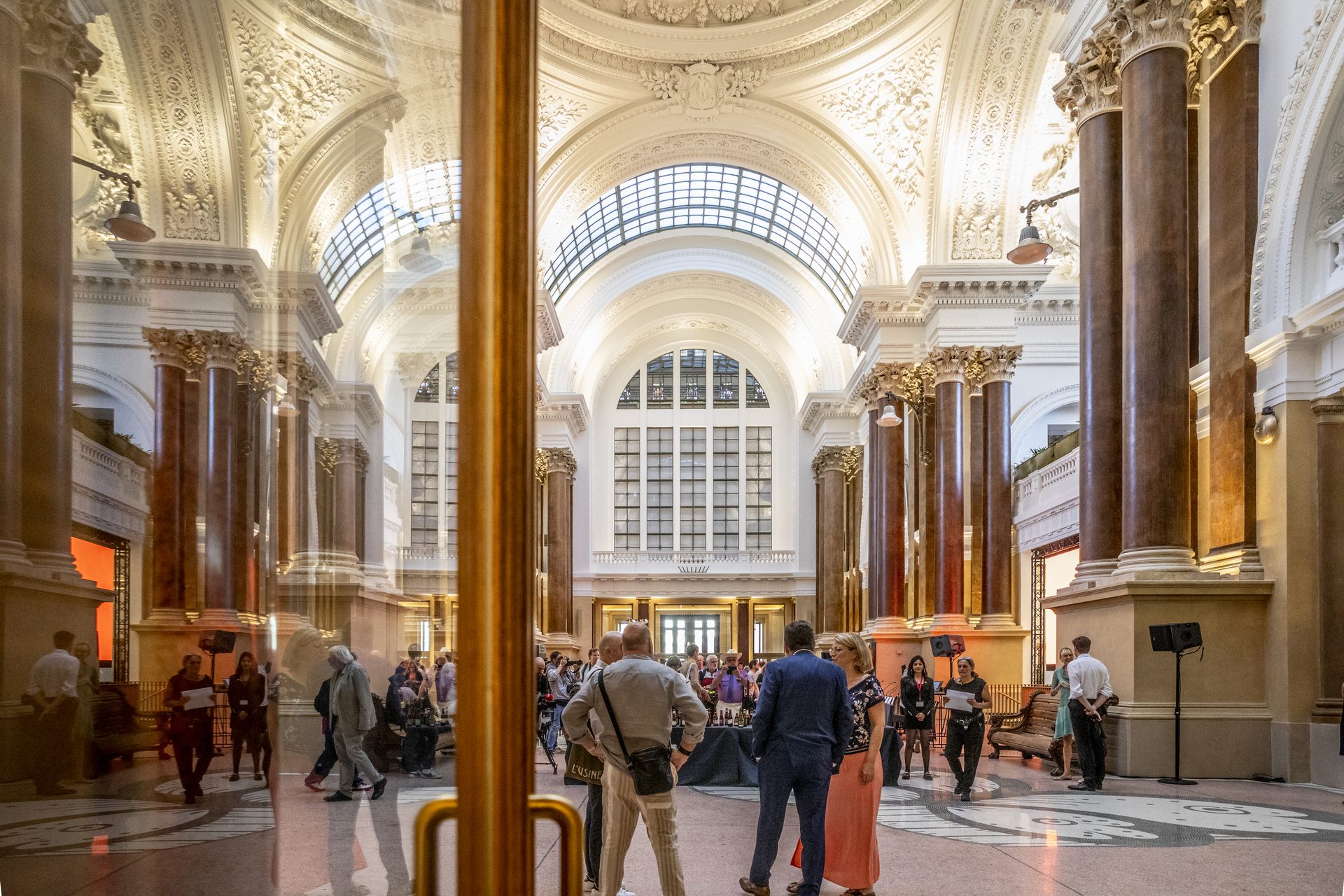After three years of renovation work, one of the most iconic buildings in the Brussels city centre finally opened its doors to the public on Thursday morning.
The idea to open up the Bourse (Stock Exchange building) to the public first surfaced 12 years ago when the building itself was already deteriorating. Eight years later, in 2020, works started on a project that would bring the building into the 21st century, and give it back to the people.

The entrance to the building has been freed from the scaffolding that has surrounded it for years. Credit: The Brussels Times/ Lauren Walker
After a long wait, the €99 million project was revealed on Thursday. It marks the first time in its history that the emblematic 12,000 m² building will be fully opened to the public thanks to the design by BEAU (Bureau d'Etudes en Architectures Urbaines, Popoff, and Robbrecht en Daem architects.
"The Bourse has always been a very closed building which people couldn’t enter easily, despite the fact that it is located in the midst of these very central avenues in Brussels, where a lot of people gather. The building represented a kind of border, dividing that public space," State Secretary for Urban Development Ans Persoons told The Brussels Times.

The building now hosts Belgian Beer World. Credit: Belga / Hatim Kaghat
"And now, it has become a kind of covered street where people can just walk through, and where exhibitions, performances and other events will be organised. I hope Belgians, tourists and certainly Brussels residents will feel very much at home here."
Bringing back grandeur
The Bourse will not only serve as a passageway – the front and back entrances will be opened allowing people to traverse the building to get from Place de la Bourse to Grand Place – people are also encouraged to stay here. There will be six entrances in total, including passages leading to rue de la Bourse and rue Henri Maus.
The largest part of the building now consists of a central space – a type of public gallery – where benches and tables have been placed, and a cafe has been opened. It is envisaged in the plans that a restaurant will eventually open here. These different functions of the Bourse are free to access for all visitors.
The staircase from the Place de la Bourse – a much-loved place for people to sit and meet people – leads visitors into the imposing main hall, where the once grey and broken columns have been restored to their original form, and the plaques doting the names of European capitals have been wiped clean, their gold elements brilliant once again.

The plaques naming several European capitals and the pillars have been completely refurbished. Credit: The Brussels Times/ Lauren Walker
A large artwork now decorates the floors at the centre of the main hall, designed by Brussels' very own Valérie Mannaerts, who took inspiration from elements of stucco and elaborated them in pink granite and mosaic. Looking up from this central point, visitors can marvel at detailed sculptures on the renovated symmetrical dome.
Another side of the building which can be accessed from the main hall is the archaeological site Bruxella 1238, the ruins of the 13th-century Franciscan monastery on which the Bourse was built.
On both sides of the majestic dome, the bay windows have been opened up to let in natural lighting. In front of these large windows, terraces have been created looking down to the main hall, adorned with dozens of plants. However, these will only be accessible to those who bought a ticket to the Belgian Beer World museum within the building.

The mezzanine-type terrace looks down onto the main entrance hall. Credit: The Brussels Times/ Lauren Walker
Controversy or celebration of culture?
Nearing the end of the main hall lies the tucked-away entrance to the Belgian Beer World, located on the second and third floors.
It is arguably one of the most controversial aspects of the project, regarded by critics as an unnecessary exploitation of the space which takes up too much of the building. Urban activist organisation, the Atelier de Recherche et d'Action Urbaine (ARAU) has repeatedly criticised this aspect of the renovation, calling it disrespectful to the Bourse's heritage.

The exhibition. Credit: The Brussels Times/ Lauren Walker
ARAU told The Brussels Times that it opposed the fact that the use of a significant part of the building was chosen unilaterally by the City, adding that it does not correspond to the building's original function (namely to be a public amenity). "In fact, the beer project has more of a commercial and tourist function."
Politically, the creation of this museum is considered vital for the birth of the project, as the company behind it helped fund the redevelopment, and will likely make it profitable. With this new attraction, the City of Brussels hopes to attract as many visitors per year as the Atomium.

A large part of the building is used by the museum. Credit: The Brussels Times/ Lauren Walker
Tickets for the Belgian Beer World cost €17 and can be bought either at the kiosk or online. The permanent sensory-based exhibition on Belgian beer culture has already been hailed by those leading the project as the main attraction of the renovated building.
Through a series of, mostly interactive, exhibits and displays, visitors are invited to embark on a discovery of Belgian beer culture in its entirety, from the start of breweries in monasteries to the brewing process.

Credit: The Brussels Times/ Lauren Walker
Finally, at the end of the tour, visitors will make their way to the top of the building, returning to the outside world on the rooftop, located on the fourth floor.
This 350 square metre terrace dubbed the "Sky Bar" is already widely known for the waffle-shaped structure of the canopy, and offers panoramic views of the city.

Credit: The Brussels Times/ Lauren Walker
In the daytime, it will serve as the final stop on the Belgian Beer World where museum visitors can enjoy a glass of chilled beer at the end of the tour, while in the evening, the panoramic rooftop will be opened up the public.

